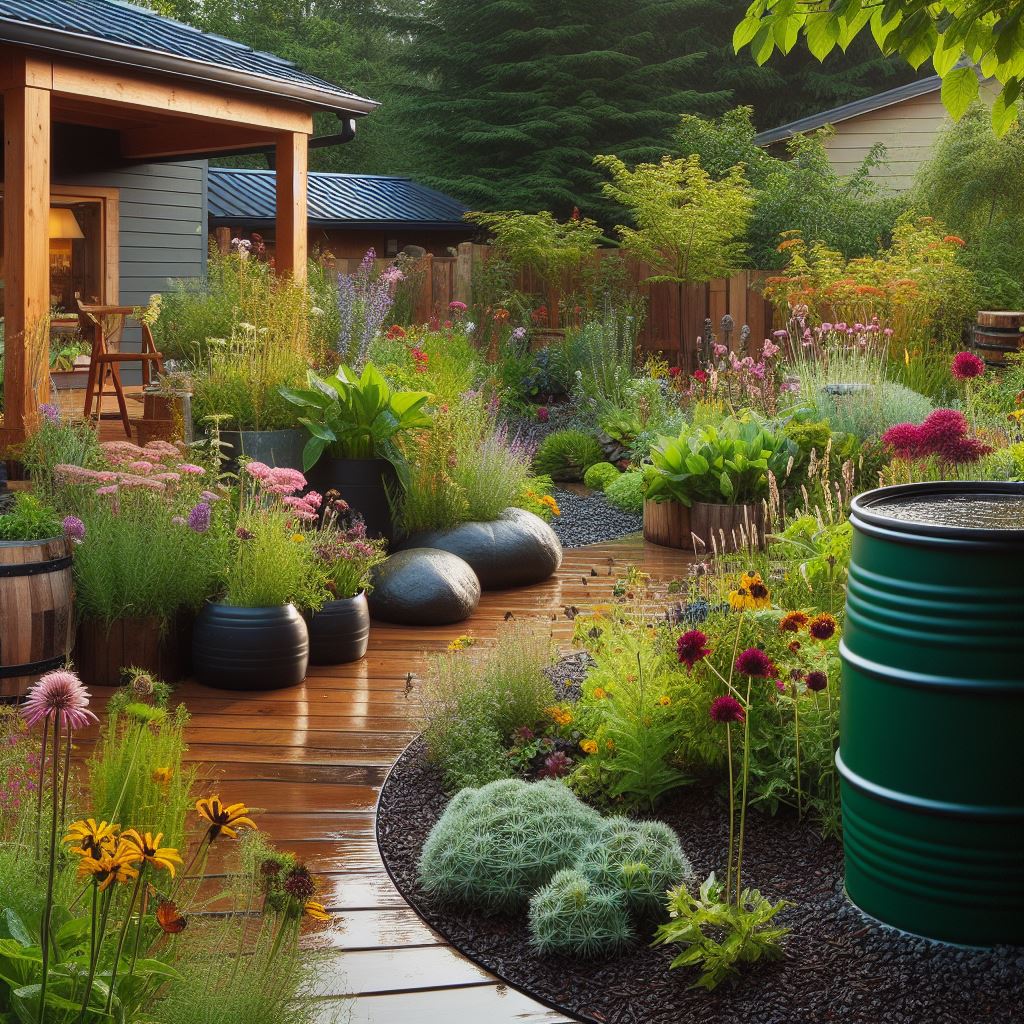
In the face of climate change and increasing urbanization, managing water runoff has become a crucial environmental challenge. Recently I attended a workshop for the Community Climate Action fund in our area. I was impressed by the presentation in which innovative, yet simple solutions like rain gardens and water butts were highlighted for their effectiveness in addressing the issue of water runoff while contributing positively to urban and suburban landscapes. While the Climate Action Fund is a tremendous opportunity for local communities to reduce climate change, we can also do our own little bit in our own back gardens as well.
Understanding the Impact of Water Runoff
Water runoff, especially in urban areas, is a significant contributor to environmental problems such as flooding, erosion, and water pollution. When rain falls on impermeable surfaces like concrete, it can’t soak into the ground. Instead, it flows over these surfaces, collecting pollutants like oil, pesticides, and heavy metals, before eventually pouring into our waterways. This not only degrades water quality but also affects aquatic life.
The Role of Rain Gardens in Water Conservation
A rain garden is a shallow, constructed depression designed to capture and absorb runoff from impervious surfaces like roofs, driveways, and walkways. These gardens are typically planted with native shrubs, perennials, and grasses. The beauty of a rain garden lies in its dual functionality: it’s both an aesthetically pleasing landscape feature and a practical tool for environmental conservation.
Benefits of Rain Gardens
- Flood Prevention: By absorbing runoff, rain gardens reduce the risk of flooding and the burden on stormwater systems.
- Water Quality Improvement: They filter pollutants from the water, thus protecting rivers and lakes from contamination.
- Enhancing Biodiversity: Native plants in rain gardens provide habitat for local wildlife, including birds and beneficial insects.
- Groundwater Recharge: Rain gardens allow water to infiltrate into the soil, replenishing local aquifers.
Water Butts: A Simple Solution for Rainwater Harvesting
Water butts, also known as rain barrels, are another effective tool for managing runoff. By attaching a water butt to your downspouts, you can collect rainwater from your roof, which can be used for various purposes like watering gardens, cleaning, or even for certain indoor uses after proper treatment.
Advantages of Using Water Butts
- Water Conservation: They provide an alternative source of water, reducing reliance on mains water and saving on water bills.
- Reducing Runoff: Capturing rainwater directly from the roof lessens the volume of runoff flowing into storm drains.
- Promoting Sustainable Practices: Using rainwater for gardening and other purposes is a step towards sustainable living.
Implementing Rain Gardens and Water Butts
Creating a rain garden or installing a water butt can be a fulfilling DIY project or an opportunity to engage professional landscapers. It’s essential to consider factors like the size of your garden, the type of soil, and local climate conditions. The choice of plants for a rain garden is also crucial – they should be able to withstand both wet and dry conditions.
Conclusion
Rain gardens and water butts are more than just practical solutions to water runoff; they represent a shift towards a more sustainable and environmentally conscious approach to living. By integrating these systems into our landscapes, we not only enhance the beauty of our surroundings but also contribute significantly to the health of our planet. As individuals and communities, embracing these methods can be a powerful step towards making a positive environmental impact.
To find out more about Community Climate Action Funds for your local community group and the grants that are available, contact the Climate Action Officer in your local county council. To get quotes for a rain garden or water butt in your own garden, simply post your job on Tradesmen.ie to find available gardener/landscapers or handymen and get a number of quotes for your job.
Together, let’s make a difference for our environment—one rain garden and water butt at a time, starting in our own backyards:-)
Cheers
Oliver Dempsey
Tradesmen.ie
7 December 2023
General Tips for hiring a tradesman
Here are some tips to consider when hiring a tradesman:-
1. Ask for phone numbers of references so that you can check them out
2. Check insurance of the tradesman where insurance is required
3. Hire a suitably qualified architect, building surveyor or building engineer if the job is anything to do with a new build, building renovation or extension






